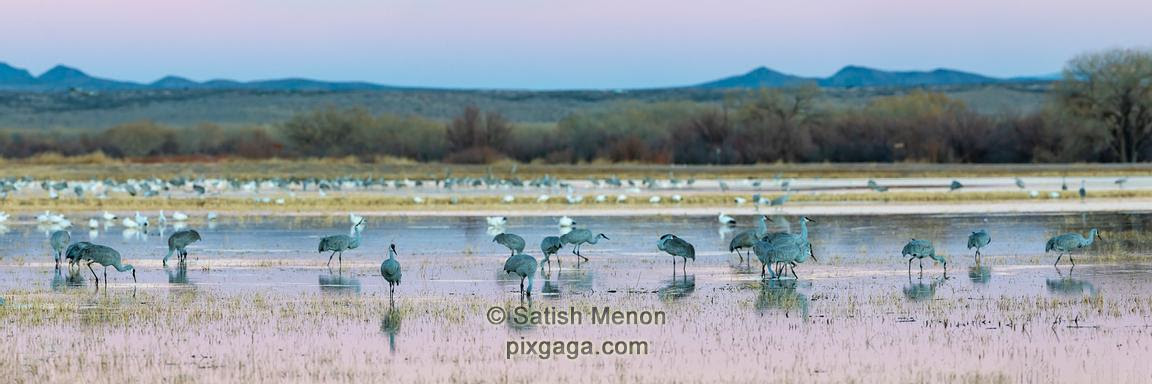When a new place is to be photographed, doing a great job on the first and only visit to the place is indeed rare. I know this from first hand experience. Whenever I visit a new place, I rarely succeed making a great image on the first day. Usually, the first day is spent in just acclimatizing myself to the new location and developing a broad idea of the possibilities of the place. On the second and third days that I am in the new location, I start to make images. When I visited Yellowstone for the first time, I made good images on the second and third days, not the first day that I got there. When I photograph locally around my house, a bulk of my landscape photographs are made over the weekend and typically one day of the weekend (such as a Saturday or a Sunday). Therefore, my best local landscapes are made when I revisit the same location three consecutive weekends.
Earlier this month, I photographed the Big Basin Redwoods State Park, which is located about 90 minutes from my home in San Jose, CA. On my first visit to this place, I hiked with a friend and my son for several hours and had no images taken. On our return, just by luck, I found a tree and the surrounding forest interesting and made a vertical panoramic stitch. I would have been perfectly happy not making a single image in that visit, but I took advantage of the opportunity and made this image.

Big Basin Redwoods State Park, Boulder Creek, CA, USA. Image made on first visit to location. Usually, I am happy making no images on the first visit.
This image was made by shooting several vertically overlapping images that were stitched together in Photoshop. Not a bad image for my first trip, but most people expect a lot of images from just one trip.
Now, on the way back from this first trip, I observed that the morning fog had settled on part of the road and furthermore, since the sun had risen quite a bit by our return, we also witnessed godbeams in several parts of the road. However, due to earlier commitments, we could not stop to photograph. I made a mental note of the location on the road and the time we saw that light, promising to come again soon.
The next day, I made my second visit to the same location, timing myself based on the previous days’ observation. Lo and behold, the same light appeared on several sections of the road and I was able to make several images with greater ease and higher success. Here are a few of them.

Early morning fog along road, Big Basin Redwoods State Park, Boulder Creek, CA, USA. Image made on my second visit to this location.

Trees and Morning Fog, Big Basin Redwoods State Park, Boulder Creek, CA, USA. Image made on second visit to this location.

Crepuscular rays, Big Basin Redwoods State Park, Boulder Creek, CA, USA. Image made on my second visit to this location.
These are just some of the images made during my second visit. It was much more successful than my first trip.
Interesting thing is that I noticed a great vista point in the location that had bad light when I was returning from both my first and second visits. To photograph from that vista point, I decided to make a third trip.
The following are couple of images I shot from the vista point, on my third visit.

Foggy morning, Big Basin Redwoods State Park, Boulder Creek, CA, USA. Image made on my third visit to this location.

Foggy morning, Big Basin Redwoods State Park, Boulder Creek, CA, USA. My last keeper image from my third visit. My most favorite image from the three visits.
My last keeper image in this series also happens to be my favorite image from the series. To reach this image, I had to make three visits.
In general, if you are looking to photograph a new landscape location, give it at least three visits.
Several things happen as you advance from the first to the third visit:
- You get very familiar with the roads and the access to key locations
- You get very familiar with the photogenic possibilities of the location
- You get very familiar with how and when the light is going to start and advance
- You get time in between the visits to pre-visualize a composition
In summary, allow time for the new location to grow on you. Give it at least three visits.
If you like this post, please forward it to your friends. Furthermore, I would greatly appreciate it if you could visit my Facebook page, https://Facebook.com/pixgaga and “like” it. Comments on this post most welcome.










